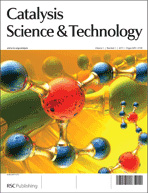For a week at the end of August, Glasgow, renowned world-wide for its rich heritage of Victorian architecture, and former European City of Culture, was home to EuropaCat, the biennial conference organised by EFCATS – the European Federation of Catalysis Societies.
Was Glasgow ready for the arrival of 1200 chemists talking about catalysis? Thanks to the hard and efficient work of the local organisers, the answer was a definite yes! The organisers had planned every detail, resulting in a well run and welcoming conference – from the army of conference helpers in their yellow T-shirts to the meal cards charged with a £10 daily allowance which could be used at a number of venues on campus at all times during the day. With this attention to detail, we all felt very well looked after.
Every day began with a plenary in the magnificent Bute Hall, designed by the Victorian architect, Sir George Gilbert Scott, with an interior decoration based on the heraldic colours of the Marquess of Bute, whose financial gift to the university funded its building in the early 1880s. The plenaries, given by recognised leaders in their fields, each provided an authoritative overview, and Minireviews based on two of these have recently been published in Catalysis Science & Technology – if you missed out on attending EuropaCat, why not take a look at these Minireviews to get a flavour of the conference.
Structure sensitivity of the Fischer–Tropsch reaction; molecular kinetics simulations, Rutger A. van Santen, Mohammed Minhaj Ghouri, Sharan Shetty and Emiel M. H. Hensen, Catal. Sci. Technol., 2011, 1, 891-911 DOI: 10.1039/C1CY00118C

Issue 6 Catalysis Science & Technology
Between them, the Plenaries illustrated the many advances that have been made in catalysis research in recent years. In addition to some fantastic science, we also were entertained by some molecular movies from Rutger van Santen, and a detailed analysis of the cover illustration of Issue 6, 2011, Catalysis Science & Technology, by Javier Perez-Ramirez (Design of hierarchical zeolite catalysts by desilication, Danny Verboekend and Javier Pérez-Ramírez, Catal. Sci. Technol., 2011, 1, 879-890, DOI: 10.1039/C1CY00150G).
Free copies of this issue were available in the exhibition, and proved to be very popular … and I suspect that a number of people were attracted by its imaginative cover (incidentally, the author, Javier Perez-Ramirez drew the illustration himself!).
The parallel sessions that followed the plenaries were held in a number of lecture theatres throughout the university buildings, which presented the delegates with an opportunity to see more of the university. These sessions covered a broad mix of catalysis topics, including catalyst preparation, characterisation, deactivation and industrial, computational and homogeneous catalysis, and included a number of keynote lectures. The talks were all of a very high standard, and it was great to see students as well as professors speak about their work.
We sponsored the poster session on Tuesday evening, held in the Glasgow University Union, which was very well attended. The posters took over the building for the evening – wherever you went, there seemed to be more posters on display … and this poster session was just one of three held during the conference! This very high level of student participation is very encouraging for the future of catalysis research.
Many thanks are due to the local organisers, in particular David Jackson (who unfortunately was unable to attend) and Justin Hargreaves, for organising a very enjoyable meeting.
The next EuropaCat will be held in 2013 in France.
.
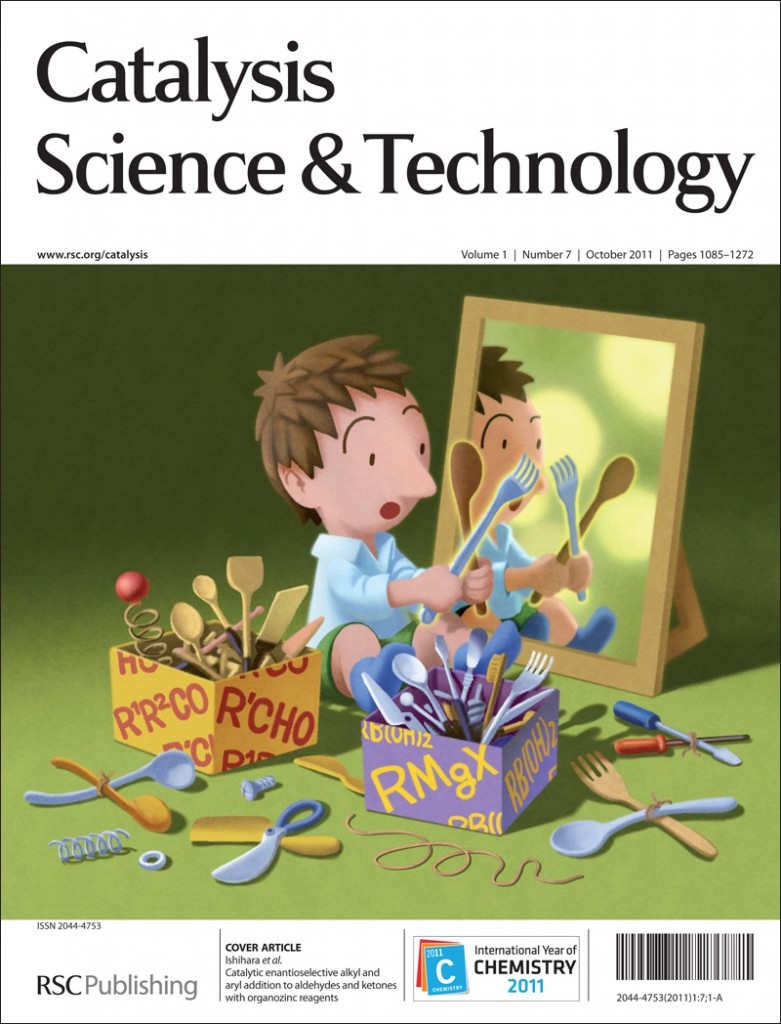 alysis Science & Technology this month shows a small boy playing with various items such as spoons and forks with a mirror reflecting his play.
alysis Science & Technology this month shows a small boy playing with various items such as spoons and forks with a mirror reflecting his play.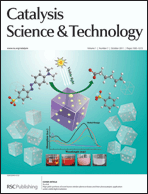 The inside cover is by Liqiang Xu and co-workers from Shandong University, China and illustrates their work on ‘High yield synthesis of novel boron nitride submicro-boxes and their photocatalytic application under visible light irradiation’ Catal. Sci. Technol., 2011, 1, 1159-1165
The inside cover is by Liqiang Xu and co-workers from Shandong University, China and illustrates their work on ‘High yield synthesis of novel boron nitride submicro-boxes and their photocatalytic application under visible light irradiation’ Catal. Sci. Technol., 2011, 1, 1159-1165










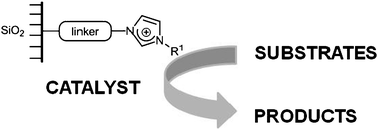 n the catalytic uses of imidazolium derivatives grafted on to silicas, including metal catalysts (complexes and nanoparticles) and metal-free ones. It is intended to help in inspiring future developments and interest in the growing field of catalysis by supported imidazolium salts and NHC (N-heterocyclic carbenes) complexes based on organosilicas.
n the catalytic uses of imidazolium derivatives grafted on to silicas, including metal catalysts (complexes and nanoparticles) and metal-free ones. It is intended to help in inspiring future developments and interest in the growing field of catalysis by supported imidazolium salts and NHC (N-heterocyclic carbenes) complexes based on organosilicas.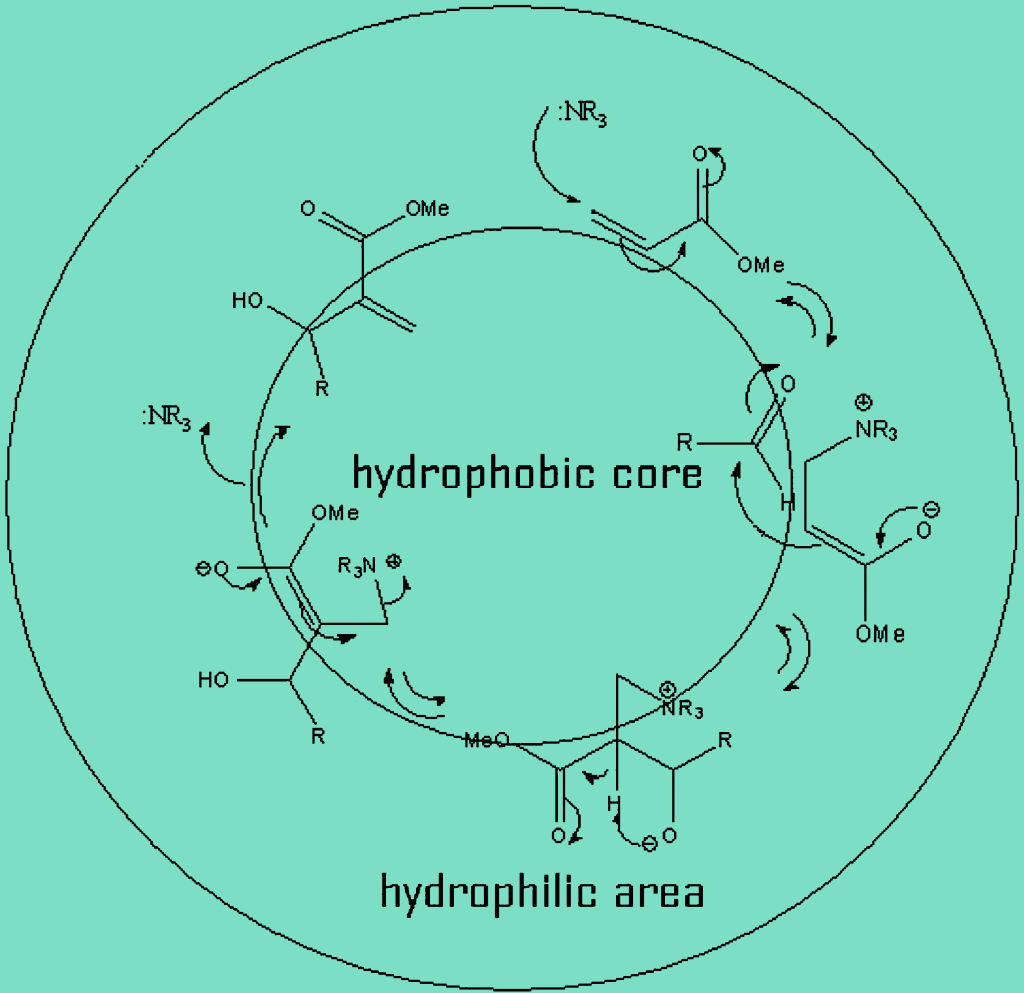
 In this HOT article, the efforts of Graham Hutchings and co-workers to produce efficient catalysts based on gold and gold palladium nanoparticles supported on a variety of supports for the clean transformation of 1,2-propanediol (important in the synthesis of fine chemicals) to methyl lactate and methyl pyruvate are described.
In this HOT article, the efforts of Graham Hutchings and co-workers to produce efficient catalysts based on gold and gold palladium nanoparticles supported on a variety of supports for the clean transformation of 1,2-propanediol (important in the synthesis of fine chemicals) to methyl lactate and methyl pyruvate are described. Bruce Gates and colleagues from the University of California look at the conversion of lignin-derived bio-oils by a platinum-aluminium oxide catalyst in this Catalysis Science & Technology Hot article.
Bruce Gates and colleagues from the University of California look at the conversion of lignin-derived bio-oils by a platinum-aluminium oxide catalyst in this Catalysis Science & Technology Hot article.


